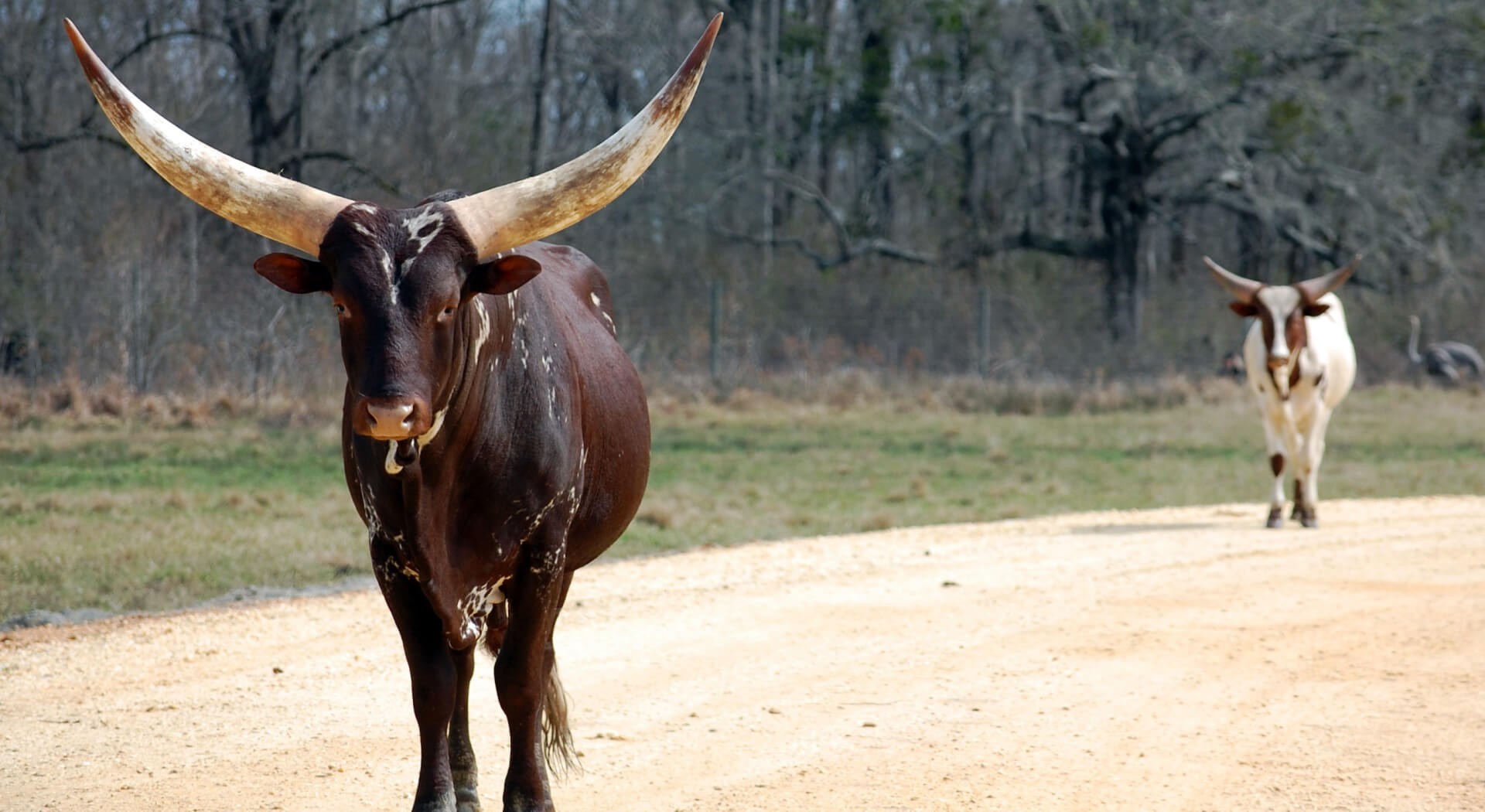Our Watusi
Our Ankole-Watusi cattle are among only 1,500 of the species that live outside of their native Africa. They first came to the United States in the 1960s.
In the Wild
Known for their strikingly large horns, Watusi have been prized for their beauty and used as ceremonial animals in Africa. Their coats’ colors and patterns vary from dark red to black, and from solid to speckled.
Their primary homelands are Rwanda, Burundi and Uganda, where they live in slow-roaming herds. The adults in the herd sleep in a circle every night to protect the calves who are positioned in the middle.






